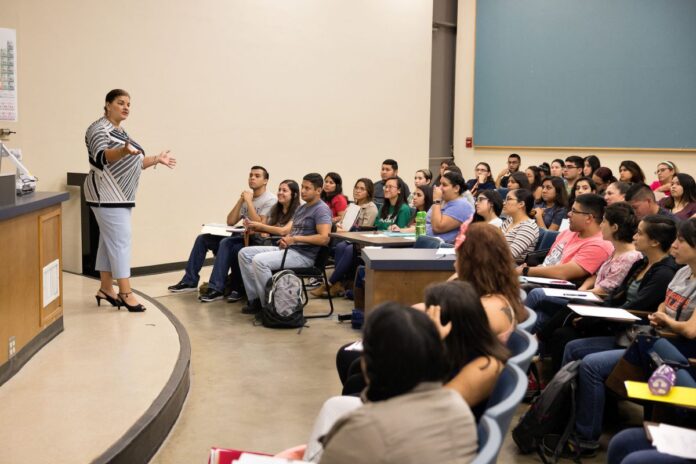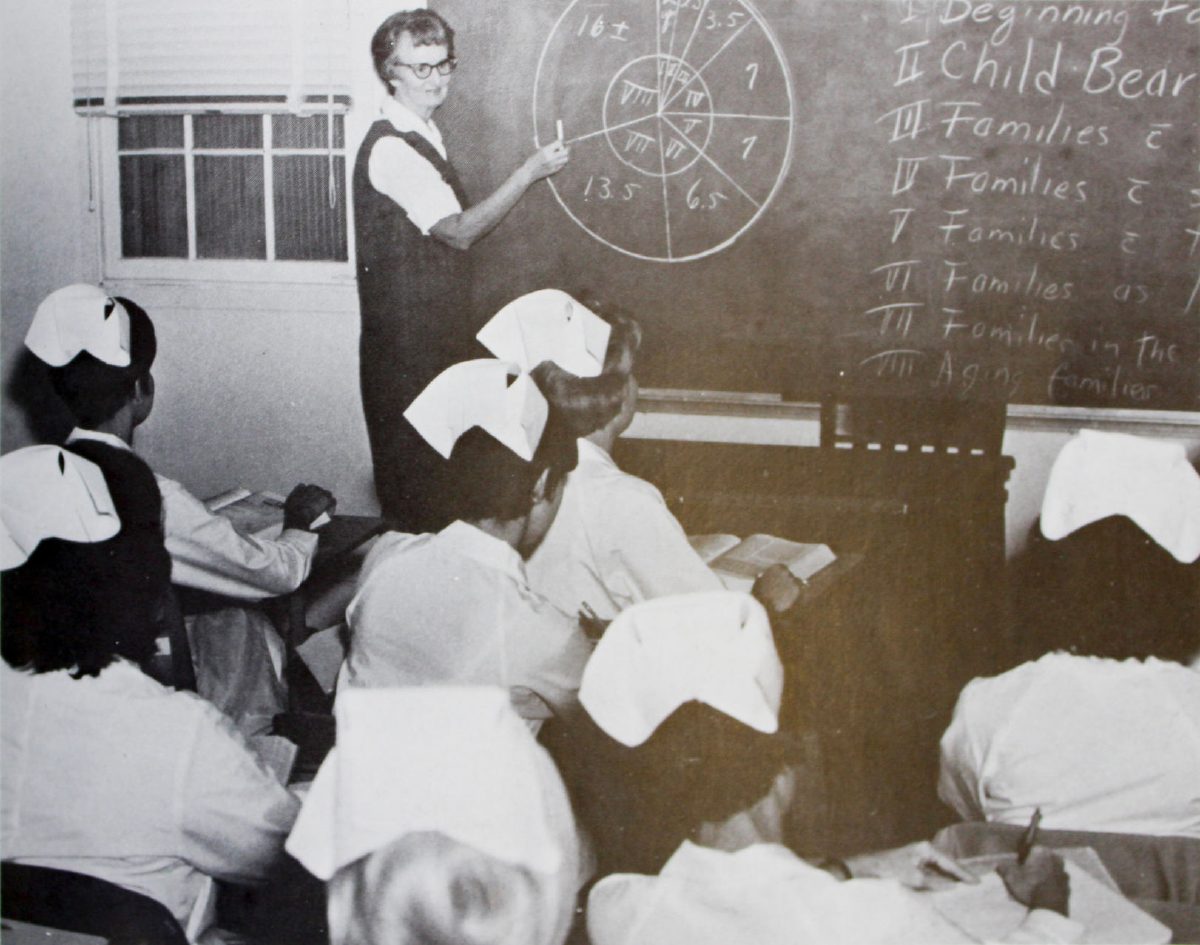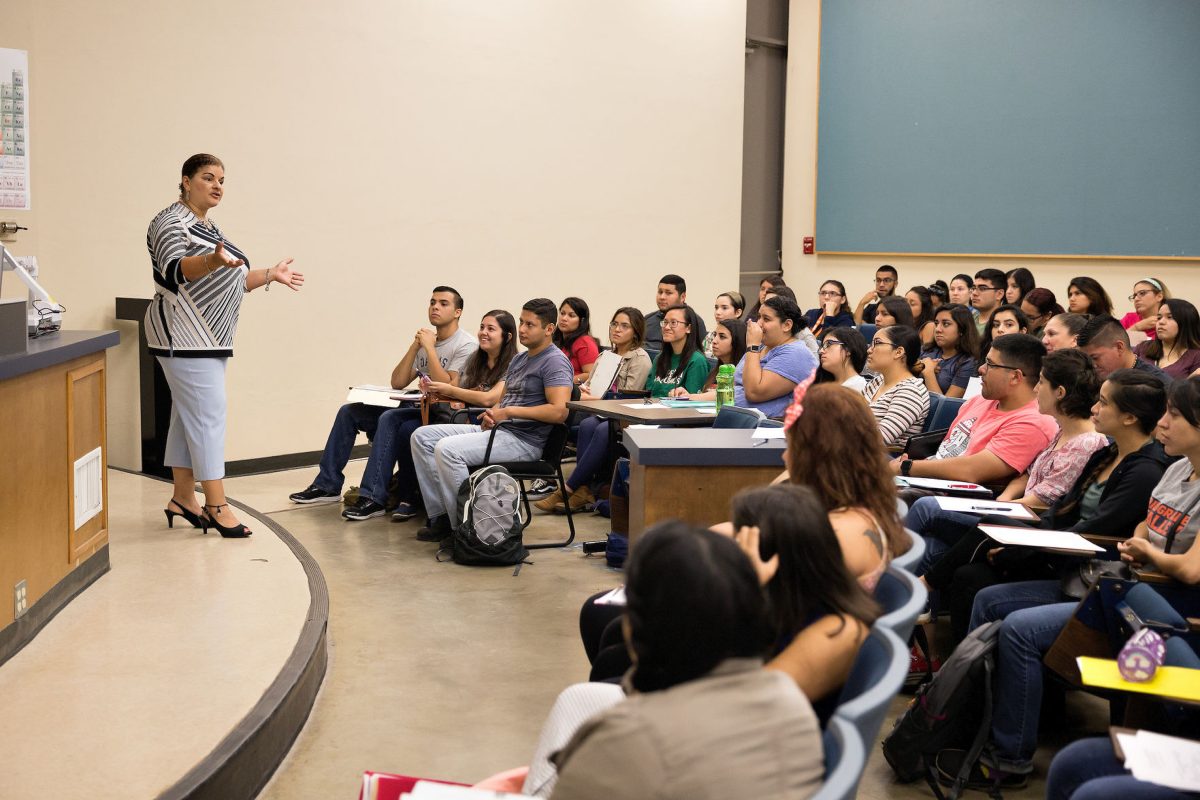BY Jennifer L. Berghom
The technology might have changed, but the dedication to and passion for treating patients have remained the focus of training nurses at The University of Texas Rio Grande Valley and its legacy institutions for the past 50 years.
“We didn’t have laptop computers or phones when I was studying. We really didn’t have a lot of resources on hand, like students have now,” said Dr. Juanita “Janie” Cortez Acebedo, assistant professor of Nursing and an alumna of the nursing programs at both Pan American University and UT Brownsville/Texas Southmost College (UTB/TSC). “The resources the students have now is incredible.”
Acebedo, who earned an associate degree in nursing from Pan American University and her bachelor and master’s degrees in nursing from UTB/TSC, said her training from the legacy institutions prepared her well to serve the Valley and beyond.
“I found that the faculty were very nurturing and the programs were very thorough in preparing me to continue and serve the community,” she said. “That’s what I liked about these institutions – they give an opportunity for the students who are here. We’re taking care of the community, so we need to continue to offer these programs. We’re teaching the students how to take care of their own people here.”
To honor that growth and dedication, the UTRGV School Nursing celebrated its golden anniversary with a 50 Years of Caring Reunion on Saturday, Sept. 2, at the McAllen Convention Center.
The event included entertainment from UTRGV’s Ballet Folklórico and Mariachi Mariposa, and a keynote address from Dr. Nilda Peragallo Montano, dean of the University of North Carolina-Chapel Hill School of Nursing and past president of the National Association of Hispanic Nurses.
The anniversary event also honored alumni and faculty who have played integral roles in advancing its ever-challenging nursing programs.
A DISTINGUISHED HISTORY
In addition to their high-tech training, nursing students also must take a community nursing course, in which students are paired with families throughout the Valley for whom they provide care and participate in community health fairs.
The nursing program began in 1967, at what was then known as Pan American College, and offered associate degrees. It began offering an RN (registered nurse) to BSN (Bachelor of Science in nursing) in 1983; a bachelor’s degree program in 1992; and a master’s degree program in 1994. More than 4,800 students have graduated from the university’s nursing program in the past 50 years.
As the program grew and evolved, the university made sure its faculty received the training needed to educate students to be highly skilled nurses and comply with ever-changing state licensing requirements, said Sylvia Ybarra, who worked as an administrator for the nursing program for more than 36 years.
“Most of the faculty just had bachelor’s degrees and were teaching. But then we got into the BSN program and no longer would that be acceptable,” she said. “So the faculty all started going to school to get a master’s degree. UT Health Science Center at Houston came down and brought their faculty, and they taught here through a cooperative program we had with UT Houston and UT Health Science Center at San Antonio. All the classes were in the evenings, late 1970s and ’80s.”
The nursing program not only trained thousands of nurses to care for the people of the Rio Grande Valley, but also provided a way for students to improve the socioeconomic situation of their families and advance in their careers, said Nancy Nadeau, clinic associate professor of nursing.
“We answered the call for a healthier community,” she said.
Acebedo said she has seen first-hand how the nursing program has improved the lives of the community.
“I come from a migrant worker family,” she said. “When I was growing up, we had very little resources and very limited access to healthcare. There are still some gaps, but the nursing programs we have are benefiting our community. Our clinics are run by our nurse practitioners serving people with limited funds.”







